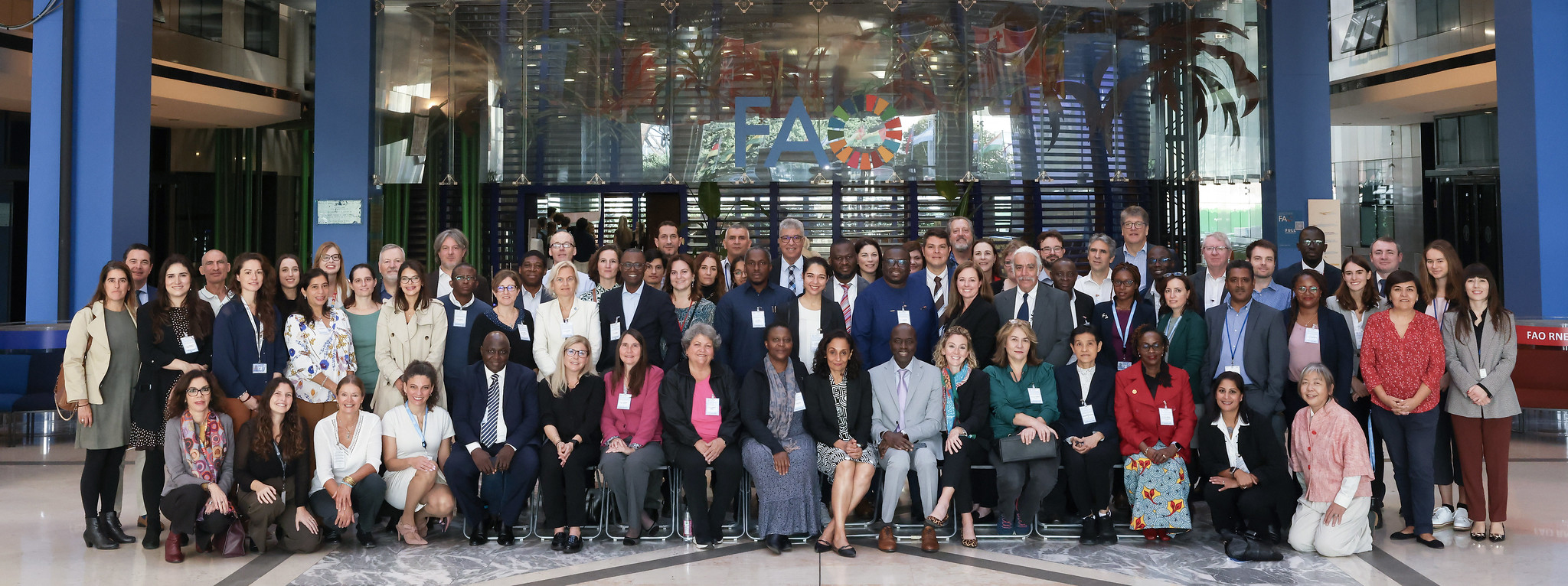Mapping the path to strengthen animal health early warning systems

Technical consultation on the strategic framework for early warning of animal health threats. (Atrium) FAO Headquarters.
©FAO/Alessandra Benedetti
Animal diseases pose a direct threat to human health and have multiple socio-economic impacts. A rapid, well-coordinated, and strategically planned response is crucial to contain the spread of disease within and between countries. This will require early warning, fast detection, and preparedness to respond.
Recognizing the need for more coordinated efforts to strengthen the early warning, detection and response capacities of health systems, FAO brought together more than 60 experts from 25 countries for a three-day meeting. The global technical consultation on the strategic framework for early warning of animal health threats, held from 6 to 8 November in hybrid form at FAO headquarters and virtually, focused on identifying priorities and gaps for effective prevention and control of high-impact animal diseases, including zoonoses, at national, regional and global levels. Experts from animal, public and environmental health from various international organizations and regional networks contributed actively in the discussions.
The meeting emphasized the importance of effective early warning systems as a critical component in addressing animal health threats. Such systems provide the capacity to generate and disseminate timely and meaningful warning information, enabling individuals, communities, and organizations threatened by a hazard to prepare and act appropriately and in sufficient time to reduce the possibility of harm or loss. Comprising of data collection to inform risk assessment, analysis, and forecasting of hazards, communication and dissemination of authoritative, timely, accurate, and actionable warnings, as well as preparedness at all levels to respond to the received warnings, these systems play a key role in reducing harm or loss.
However, gaps in legal, institutional, and coordination frameworks hinder the operationalization of early warning systems, prompting FAO to convene experts to identify challenges and propose solutions. The challenges identified during the meeting revolved around the need to gather evidence on disease drivers, monitoring risks, anticipation of disease occurrences, and the reduction of the impact of health hazards. As methodologies for early warning continue to evolve, experts emphasized the challenge of integrating these systems and tools across health sectors in a sustainable manner.
Additionally, during the technical consultation, participants delved into the intricacies of building sustainable early warning systems. The focus extended beyond transferring knowledge and capacity, exploring the obstacles to creating an enabling environment for early decision-making. Key interventions outlined in the short, medium, and long term aim to transition from responsive to anticipatory and ultimately preventive systems. This diverse expertise, spanning animal health, public health, and environmental health, underscored the power of collaboration across sectors. Among the key issues it was stressed the importance of building systems from the ground, making sure that they are tailored to the countries’ needs and realities, that is , the need to raise awareness for the value of prevention and early detection, creating feedback loops in which the data collected generated value for those feeding those data into the system; and the role of international organizations on creating and maintaining common data annotation schema and other tools for data interoperability, supporting governance and search for funding.
The outcomes of this global consultation will play a pivotal role in shaping a framework for early warning of animal health threats. This evolving framework will be a dynamic document capable of adapting to changing needs and unique regional challenges, aiming in the short, medium, and long term to transition from responsive to anticipatory and ultimately, preventive systems. The framework will empower countries to identify the targets and objectives of early warning, outlining the elements needed to create an enabling environment for effective prevention of animal health threats and mitigation of consequences by early containment. The framework will provide indicators to follow and benchmark progress, so that countries can use it as a roadmap for progressive strengthening of early warning capacity.
This consultation will also pave the way for an increased number of countries to adopt and implement the framework for national disaster risk reduction strategies, in line with the sustainable development goal of ensuring healthy lives (target 3.d). This is not only a key indicator within the One Health (OH) Priority Programme Area but also aligns with the FAO's Strategic Framework 2022-31 to support the transformation to more efficient, inclusive, resilient, and sustainable agrifood systems.

